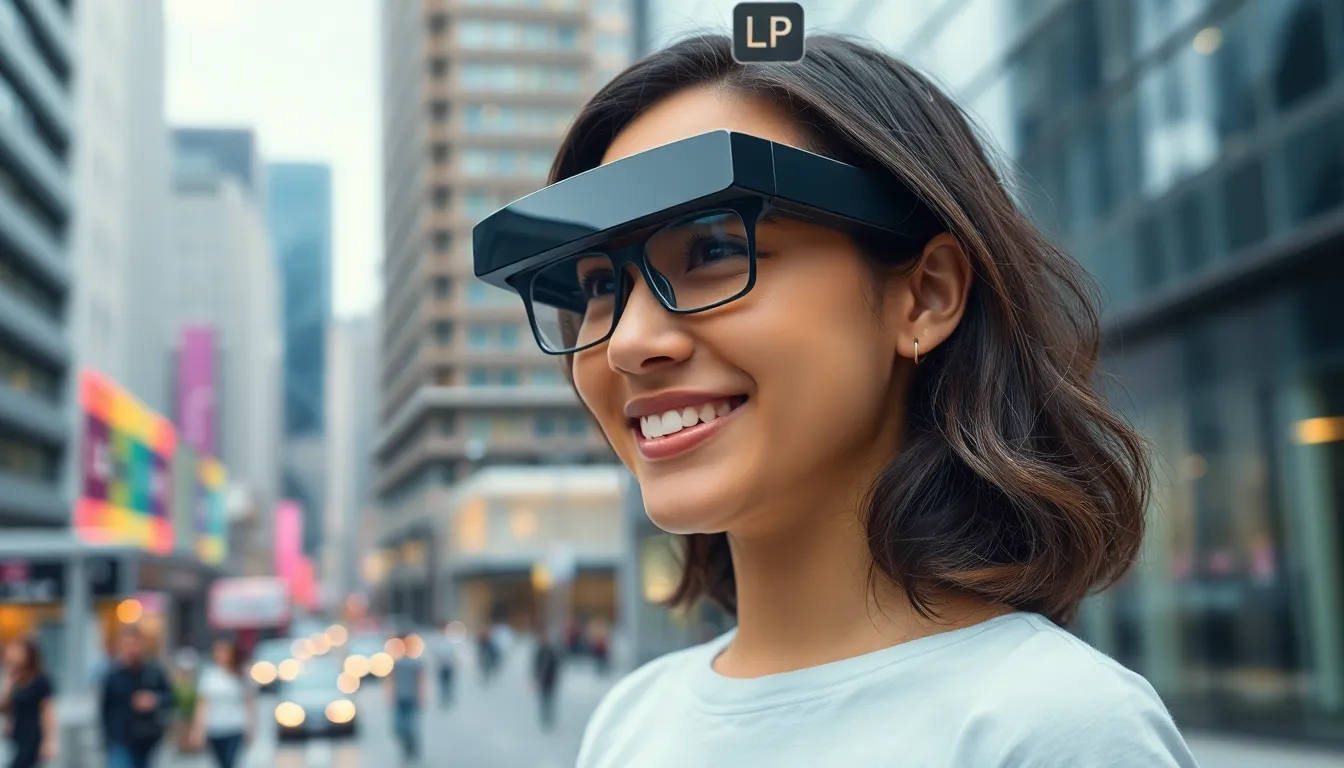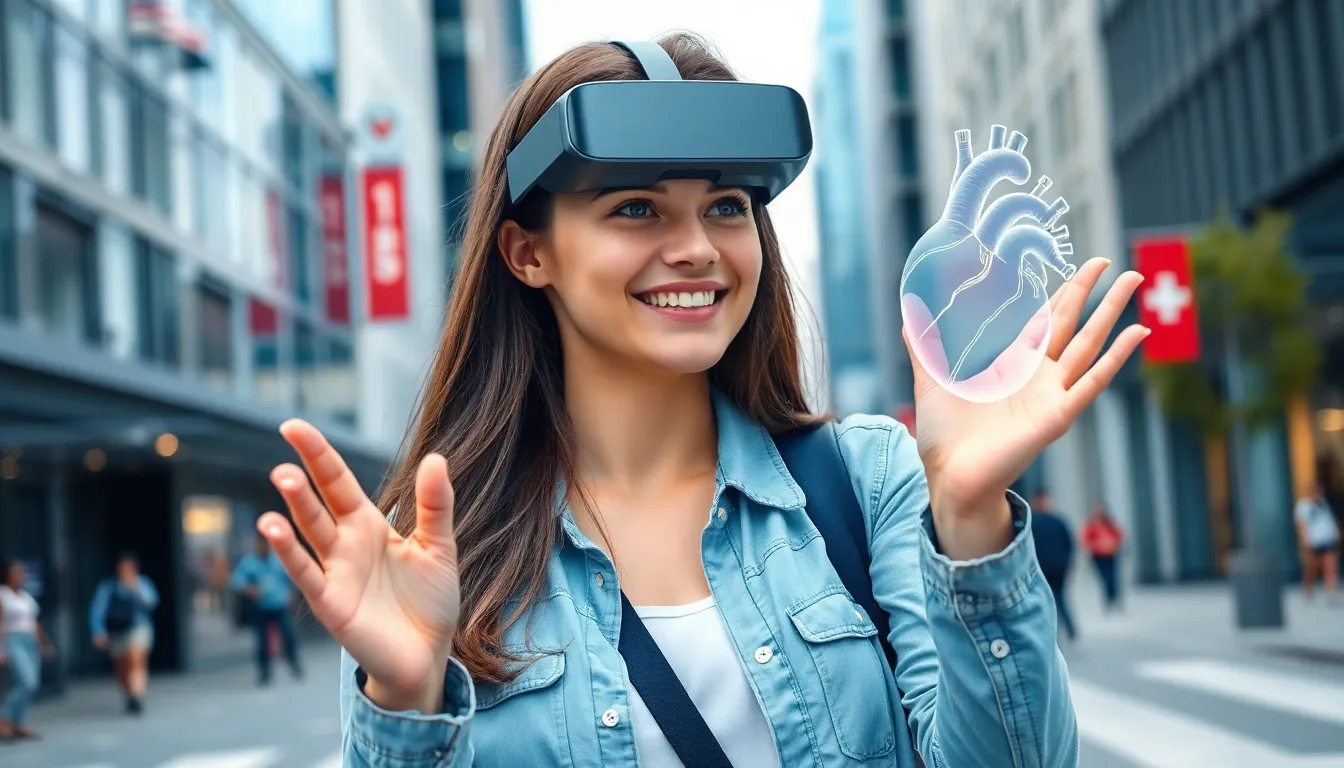In a world where technology moves faster than a caffeinated squirrel, low-code AR tools are like the magic wands of the digital realm. They let anyone—from tech whizzes to those who still struggle with their smartphone—create stunning augmented reality experiences without needing a PhD in computer science. Imagine crafting immersive worlds with just a few clicks, all while sipping your morning coffee.
Table of Contents
ToggleOverview of Low-Code AR Tools
Low-code AR tools empower users to create augmented reality experiences with minimal technical skills. These platforms simplify the development process, allowing creators to focus on design rather than coding complexities. Individuals from various backgrounds can leverage these tools to build interactive content for education, marketing, and entertainment.
Users can drag and drop components to design their AR applications, streamlining workflows. For example, motion tracking, 3D model manipulation, and environment integration become accessible through intuitive interfaces. As a result, businesses can develop AR campaigns more efficiently, reducing time to market and project costs.
Some leading low-code AR tools include ZapWorks, Blippar, and Unity’s MARS. Each platform offers unique features tailored to different user needs. ZapWorks provides a user-friendly interface for beginners, while Blippar focuses on commercial applications, and Unity MARS caters extensively to developers wanting advanced functionalities.
Additionally, low-code AR tools enhance collaboration among team members. Artists, designers, and marketers can work together without relying solely on developers, fostering creativity. This collaboration promotes a more holistic approach to project outcomes.
Security measures also evolve within these platforms, ensuring users can create safe AR experiences. Many tools implement user authentication, data encryption, and content moderation to protect sensitive information. Overall, low-code AR tools represent a significant shift in the AR development landscape, democratizing access to innovative technology.
Key Features of Low-Code AR Tools

Low-code AR tools offer a variety of features that make AR development more accessible and efficient for users.
User-Friendly Interface
A user-friendly interface is a hallmark of low-code AR tools. Designers benefit from intuitive layouts that eliminate the need for extensive programming knowledge. Drag and drop functionalities simplify the creation of AR scenes, allowing users to focus on creativity rather than technical hurdles. Visual editors enable quick adjustments and previews, facilitating rapid iteration and prototyping. Each tool offers tutorials and support resources, ensuring users remain supported throughout their creative journey.
Integration Capabilities
Integration capabilities enhance the functionality of low-code AR tools. Compatibility with existing software and platforms allows users to embed AR experiences in websites, apps, and social media. APIs for data sources enable real-time updates to AR content, creating dynamic and relevant interactions. Users can also leverage third-party libraries and tools, expanding the scope of their AR applications. This adaptability supports a wide range of use cases, from marketing campaigns to educational programs.
Popular Low-Code AR Tools in the Market
Low-code AR tools facilitate the creation of augmented reality experiences, making it easier for users to design engaging content. Some popular options include ZapWorks and Blippar, each with distinct features that cater to various needs.
ZapWorks
ZapWorks allows users to craft AR content through an intuitive interface. Creators can utilize its drag-and-drop functionality for straightforward design tasks. This platform supports various media types, enhancing flexibility in project creation. Additionally, it offers robust analytics tools that track user engagement and performance metrics, aiding in effective content optimization. ZapWorks also integrates seamlessly with existing workflows, making it an ideal choice for teams focusing on marketing and education.
Blippar
Blippar focuses on creating interactive experiences through its easy-to-use design tools. Users can manage 3D models and animations effortlessly. This platform supports advanced features like image recognition, providing a dynamic user experience that boosts engagement. Blippar’s cloud-based system ensures that projects can be accessed and edited from any location, streamlining collaboration among team members. Its analytics capabilities further inform decision-making, ensuring that content resonates with target audiences.
Advantages of Using Low-Code AR Tools
Low-code AR tools offer significant advantages, transforming how users create augmented reality experiences. Benefits such as faster development time and improved accessibility for non-developers contribute to their growing popularity.
Faster Development Time
Faster development time becomes a crucial factor in the competitive AR landscape. Users can build engaging AR experiences rapidly due to intuitive interfaces and streamlined processes. Drag-and-drop functionalities allow developers to incorporate components quickly, minimizing delays. Enhanced collaboration features facilitate real-time input from team members, accelerating project completion. Statistically, businesses using low-code platforms report development times reduced by 30-50%. This efficiency leads to quicker iterations, enabling users to test and refine their projects promptly.
Accessibility for Non-Developers
Accessibility for non-developers stands out as a key advantage of low-code AR tools. These platforms empower individuals without technical backgrounds to create immersive content with ease. Visual editors and straightforward navigation eliminate the steep learning curve associated with traditional programming. Users benefit from pre-built templates and customizable assets, making it simple to design unique AR experiences. According to industry reports, 70% of AR content creators identify low-code tools as instrumental in enabling broader participation. As a result, diverse teams can collaborate on AR projects, harnessing various perspectives and skills.
Challenges and Limitations
Low-code AR tools, while empowering, face several challenges and limitations that users must consider. These issues can impact the effectiveness and reach of AR projects.
Scalability Issues
Scalability presents a significant challenge for low-code AR tools. Many platforms struggle to support large-scale deployments, affecting user experience as projects expand. Companies frequently experience performance issues when integrating complex features into their AR content. User traffic can overwhelm systems, leading to slow response times. Moreover, some tools may not offer the infrastructure necessary to accommodate growing user bases. Businesses looking for rapid growth might find it difficult to maintain performance and quality. Solutions typically become fragmented when scaling up, causing inconsistencies in user interactions.
Customization Constraints
Customization constraints often limit creative potential in low-code AR tools. Although these platforms provide user-friendly interfaces, they can restrict deeper personalization for advanced users. Users often encounter predefined templates that may not fully align with unique brand identities. Some low-code solutions lack the ability to adjust intricate design elements, limiting professional developers. When custom functionalities are needed, reliance on coding expertise may still be required. Compatibility with existing systems can also present challenges, restricting the integration of tailored experiences. Such limitations may require users to compromise on their vision, impacting overall project effectiveness.
Low-code AR tools are transforming the way individuals and businesses approach augmented reality development. By simplifying the creation process and enhancing collaboration, these platforms empower users to bring their creative visions to life without needing extensive technical skills.
While challenges like scalability and customization remain, the advantages of faster development times and increased accessibility make low-code AR tools an attractive option for many. As the technology continues to evolve, it’s likely that these tools will become even more integral to various industries, driving innovation and engagement in ways previously thought impossible. Embracing low-code AR is not just a trend; it’s a pivotal step toward democratizing immersive experiences for everyone.






